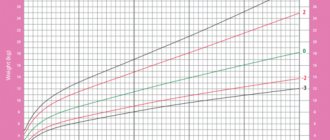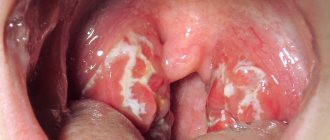Mother's milk is the best food for a baby. Animal milk, infant formula, powdered milk, teas, sweetened drinks, water and cereals are significantly inferior in value to mother's milk and can often harm the child, causing a number of diseases (allergic reactions, intestinal disorders, etc.).
Mother's milk is more easily absorbed by the child's body. It also ensures normal growth, development and protection of the child from disease.
In the first six months of life, the baby needs only mother's milk. When breastfeeding, no other food or water is usually required during this period.
Even in hot and dry climates, mother's milk fully satisfies the baby's fluid needs. Provided full breastfeeding, the baby does not need water or other types of liquid in the first six months of life. Consuming any other food or drink may cause diarrhea.
Breast milk substitutes, which are similar in nutritional value, are very expensive. When bottle-fed, a child needs 40 kg of diluted milk formula for a year, which will require about 80 cans of dry formula. Health care providers should inform all mothers considering switching to breast milk substitutes about their costs.
If regular weighing of a breastfed baby under six months indicates slow weight gain, then:
- such a child needs more frequent feeding, the duration of each feeding should be at least 15 minutes;
- the baby needs to be helped to latch onto the breast correctly;
- the child may be sick and should be examined by a pediatrician;
- the family must provide rational, nutritious nutrition to the mother during breastfeeding, including through the introduction of special food products into the diet that contain balanced amounts of vitamins and microelements.
An infant needs additional food and drink only when he is six months old and ready for the introduction of complementary foods - new foods in his diet. If there are indications, some children, on the recommendation of a doctor, are introduced to complementary foods from four months. Breastfeeding can continue until the child is one to two years old.
Newborns should be with their mother and should be put to the breast within the first hour of birth. The only contraindication to breastfeeding is the presence of diseases such as HIV or hepatitis in the mother.
Contact between the newborn and the mother should be as long as possible. It is best when mother and child are close together in the same room. The baby needs to be breastfed as often as he wants.
Until what age should a baby be breastfed?
This question will be correctly divided into two parts: until what age should a baby be fed only breast milk, and until what age should a child be supplemented with milk after the introduction of complementary foods.
Regarding the first point, the World Health Organization (WHO) gives the following advice: exclusive breastfeeding is recommended for up to 6 months of a child’s life. It is undesirable to introduce complementary foods earlier, because the baby’s digestive system is not yet ready for complex foods, or later, because the baby’s body is running out of “innate” reserves of iron and other important substances, and he can only get them with complementary foods.
Regarding the second point, WHO advice sounds like this: it is advisable to continue breastfeeding for up to two years or even longer. We can say that this is more of an emotional than a physiological moment. Breastfeeding forms a close bond between the baby and the mother, and it is better to loosen it gently, gradually and carefully, than to then tear it quickly and to the quick. It is advisable to complete breastfeeding some time before you begin to separate from each other for a long time, for example, you return to work or your child goes to kindergarten.
Sucking mechanism
At the beginning of breastfeeding, the baby sucks quickly and superficially: this is necessary not to obtain milk, but to stimulate the breast. It is at this moment that the woman’s body receives signals from the mammary glands to the brain, and milk begins to be released. By stimulating the mammary glands, the baby performs wave-like movements with the tongue. At this moment, it is important that the baby grasps not only the nipple, but also most of the areola.
After the oxytocin reflex has been triggered and the milk has started to flow, the baby begins to suckle deeply and slowly, emptying the mammary glands.
Why is breastfeeding better than artificial feeding?
Infant formula has come a long way since its invention. Manufacturers have learned to adjust the fat and protein composition of cow's milk so that it meets the nutritional needs of a human baby, rather than a newborn calf. They began to add balanced complexes of vitamins and minerals to the mixtures and introduce beneficial bacteria. However, human milk still hides many secrets.
For example, only in recent years have researchers understood the role of oligosaccharides in breast milk. Previously, these substances were not paid much attention, but now it has become clear that they play an important role in the formation of the baby’s immunity, and some manufacturers have already begun to add them to formulas.
How many more discoveries are waiting in the wings is known only to the universe. And yet, it is theoretically impossible to create a mixture that will be in no way different from breast milk. It constantly changes - not only as the child grows up, but even during one feeding. Foremilk (the one that comes out in the first minutes) has less calories than hind milk (which comes later), and evening milk contains hormones that calm the baby and promote sound sleep. Breast milk is always different and always meets the needs of the baby. That is why doctors recommend choosing artificial feeding only in cases where breastfeeding is impossible or unsafe for medical reasons.
Here are just some of the benefits of choosing to breastfeed your newborn:
| Our expert |
Benefits of breastfeeding
Breast milk is completely adapted to the baby's body. It is easily digestible and contains special enzymes that facilitate its absorption. Mother's milk also contains water. Therefore, there is no need to supplement your baby’s drinking unless necessary.
Breast milk contains very little protein, which puts additional stress on the baby's liver and kidneys. But this protein is found in large quantities in goat and cow milk. Therefore, it is not worth giving it to a child under a certain age.
A large amount of vitamins, minerals and nutrients makes mother's milk an ideal option for children in the first year of life. No mixture can compare with it in terms of the amount of benefits for the baby’s body.
By the way, the process of breastfeeding is very important for a baby. Scientists have proven that it has a positive effect on the development of the baby’s psyche and intelligence. Breastfeeding promotes proper bite formation and reduces the risk of developing caries in the future.
Children who are breastfed are much less likely to suffer from colds and viral diseases. If a woman gets sick, antibodies are immediately formed in her milk, which protect the baby from infection.
So, the main advantages of breastfeeding are:
- Reducing a woman’s risk of developing diseases such as breast cancer, cardiovascular pathologies, circulatory problems, etc.
- Improving the quality of calcium absorption by the baby.
- Maintaining and restoring the mother’s hormonal levels after childbirth.
Thus, breastfeeding has a positive effect not only on the child, but also on the woman. Moreover, a close psychological connection is created between mother and baby.
Karina Petrova
pediatrician
| Despite the fact that manufacturers are trying every year to improve and bring the composition of formula closer to the composition of breast milk, they will never succeed in one thing - to create a product that will provide the same immune protection as mother's milk. Immunoglobulins, antibodies transmitted from mother to child through breast milk, leukocytes, macrophages and many other substances involved in the formation of the child’s immune response cannot be artificially recreated and provided to children today. And nature took care of this thousands of years ago during evolution. In addition, breast milk undergoes qualitative changes constantly, even throughout the day, adapting to the needs of the baby. Undoubtedly, the lines of formulas also differ in age, but their “step” is as much as 6 months (No. 1 - for children 0-6 months, No. 2 - for children 6-12 months, etc.), and calling them equivalent It is still not possible to replace breast milk. |
Lure
In the case of artificial feeding, complementary foods are introduced no earlier than 6 months. It is worth relying on the child’s age and readiness to introduce new food.
This can be determined by the following signs:
- baby sits confidently
- doubled my weight since birth
- does not push food out with tongue
- shows interest in adult food
Input rules:
- one product at a time. If we start with vegetables, then there is no need to mix them all at once, one is enough, then we observe the baby’s reaction, whether there will be allergies or gastrointestinal disorders
- the interval between the introduction of new products is 5-7 days.
- offer complementary foods before the main meal
Before introducing complementary foods, consult your pediatrician.
How to properly establish breastfeeding after childbirth?
The most important thing is that feeding should begin as quickly as possible. Experts recommend placing a newborn on the mother’s breast in the first hour of life, and there are at least three good reasons for this:
- The birth process was difficult not only for you. Believe me, your little one worked very hard too. He is tired and desperately wants to sleep, but even more desperately wants to eat thick, nutritious colostrum (special milk released from the breast in the first days after childbirth).
- By latching onto his mother’s breast for the first time, the baby gets to know you: he remembers the voice, smell, taste of the closest and most important person in the world. The sooner this acquaintance occurs, the stronger the baby’s emotional connection with his mother will be.
- In the maternity hospital, you are in a unique situation - there are a lot of specialists around you who know how to establish breastfeeding. Try and make mistakes to learn how to cope with them under the supervision of professionals.
How to organize feeding a newborn - on demand or by the hour?
What does “feeding on demand” mean? This is a technique that suggests giving the baby the breast every time he asks for it. Moreover, it doesn’t even matter whether the baby really wants to eat or is just excited: breastfeeding on demand becomes a universal answer to any needs - both physical and psychological. Scheduled feeding is a fundamentally different approach, in which the mother must adhere to a strict schedule and not spoil the baby between planned meals.
Experts believe that feeding a baby on demand is more natural. Start with it, and the schedule will establish itself: you will notice that already at 3 months the baby asks to eat at approximately the same time, and at the age of introducing complementary foods, he even develops something like an adult daily routine - breakfast, second breakfast , lunch, afternoon tea and dinner.
Because on-demand feeding rules require the baby to have unlimited access to the mother's breast, some women worry that the baby will overeat. There is no reason to worry, and here's why:
- A newborn has a very small stomach, and milk is digested very quickly. Nature has provided everything to ensure that the baby receives exactly as much food as he needs.
- When feeding a newborn on demand, the baby starts with light food and eats in small sips, so the feeling of fullness comes faster than he has time to eat too much.
- Mother's milk is drink and food at the same time. Foremilk is quite thin and mainly quenches thirst, while thick hindmilk satisfies. If the baby is just thirsty or misses his mother, he will release the nipple from his mouth after a few minutes, but if he is really hungry, the breastfeeding session on demand can drag on for a long time.
- Feeding on demand gives your baby the feeling that food is always available. Thanks to this, he is not inclined to overeat and only satisfies his current needs.
It is logical to assume that formula feeding on demand has the same advantages. But no, this does not work with artificial feeding. Milk from a bottle is drunk faster, and besides, there is no front and back mixture - it all has the same calorie content. Overfeeding with artificial baby milk is one of the main causes of excess weight in babies, so parents have to limit access to food and introduce a feeding schedule. By the way, this is another reason why you should choose breastfeeding over bottle-feeding: it’s simply impossible to watch and listen to a baby burst into tears and ask for a bottle. After all, he doesn’t understand that his mother doesn’t give it to him for his own good.
Choosing a feeding position
“Cradle” is the most common position in which the baby is fed from the left breast and is held with the left hand. When choosing this pose, you should not forget that the load on the spine should be minimal. To do this, you can put a pillow under your lower back and lean back. To prevent your arms from getting tired, you can also put a pillow under your baby.
“Cross cradle” : the baby is held with the right hand, while the left hand goes down to support the baby under the legs. Plus positions : the mother can direct the baby with her hand in any direction, adjusting the grip of the nipple.
“Hovering” : feeding occurs while standing on all fours over the baby. Plus poses : effective for lactostasis, promotes milk suction from the posterior lobes of the breast. Comfortable for inverted and flat nipples: in this position, the nipples take the shape necessary for successful feeding.
“Lying on your side” : suitable for women after a caesarean section or episiotomy - when you cannot sit for a long time. Well suited for feeding premature babies.
“From under the arm” : the position is convenient for feeding twins from both mammary glands at once. Also suitable for lactostasis, because With this type of feeding, the baby’s chin and nose are directed towards the rear lobes of the chest, from where milk comes out more efficiently.
What breaks should there be between feedings?
For the previous nine months, the baby lived in a place where there was no day and night, and food was provided around the clock. It is not surprising that he will not immediately get used to the new routine, and at first he will constantly ask for food. It is difficult to say how often you will have to put your newborn to the breast - each baby has its own characteristics and temperament. But count on approximately the following numbers: every one and a half to two hours or 10–15 times a day.
It's tiring, but fortunately not for long. Already in a month and a half, the frequency of feedings decreases to 5–7 times a day, and by six months, many children develop the correct regime: they stop waking up during the night, and all feedings gradually become daytime.
Prevention of lactostasis and mastitis: how to care for your breasts?
Keeping your breasts clean is very important to your breast health. To do this, you need to rinse it once a day while taking a shower. There is no need to wash your breasts with soap before each feeding! Enough clean water.
If the skin of the areola becomes very dry or cracks appear on it, it is necessary to lubricate it with natural oils or ointments purchased at a pharmacy specifically for this purpose. If creams do not cope with the task and feeding causes severe pain and discomfort, you can purchase silicone pads. The baby won't even notice their presence.
To avoid injury to your breasts, wear cotton bras without wires. The underwear should be as comfortable as possible, not squeeze the chest or rub the skin.
Important! Experts do not recommend breastfeeding women to pump unnecessarily. You can express milk if you are going somewhere and other people will feed the baby in your absence.
If the breastfeeding process is established correctly, the breast will produce as much milk as needed. If a woman begins to express the remainder after feeding, there will be an increase in milk production and the pumping process will need to be repeated each time.
When there is too much milk, you can express a little before feeding, especially if the baby is choking from a strong flow.
If a woman refuses to pump regularly, after a few days the milk production process will normalize. It will be produced in the amount necessary for the baby to be full.
If a woman does experience pain in the breast area or lumps appear, this may indicate lactostasis.
What is lactostasis and why does it occur?
Lactostasis, or milk stagnation, often occurs when there is excess milk production. The following factors can provoke the development of pathology:
- Uncharacteristic anatomy of the mammary glands. In this case, due to the structural features of the breast, the child simply cannot suck out all the milk completely, so it stagnates.
- Incorrect nipple structure. Very often, lactostasis is observed in women with flat nipples. The baby cannot latch onto the nipple correctly, and the breast does not empty completely.
- Violation of the anatomy of the structure of the milk ducts. If the ducts are too narrow or tortuous, milk can also stagnate in the breast, causing unpleasant symptoms.
- Milk plug formation. Sometimes “plugs” appear in the milk ducts. As a result, the outflow of milk stops completely or partially and stagnation occurs.
- The presence of cracks and damage to the nipples. The painful sensations can be so strong that the woman herself decides to stop breastfeeding, which can also provoke a number of problems.
- Breast injuries. Bruises, blows and other mechanical impacts can lead to disruption of the natural outflow of milk. Compressing the breasts with tight underwear and items of clothing is also dangerous.
- Hypothermia. Prolonged exposure to cold provokes a narrowing of the milk ducts. As a result, the outflow of milk is disrupted.
- Diffuse fibrocystic mastopathy. In this disease, dense fibrous tissue grows in the breast. It compresses the milk ducts and interferes with the process of natural breastfeeding.
Inappropriate actions and lack of awareness of the mother regarding the rules of breastfeeding can also provoke stagnation of milk. This may include:
- Incorrect attachment of the baby to the breast. This can lead not only to compression of the ducts and the development of lactostasis, but also to nipple injuries.
- Irregular emptying of the breast. If a mother moves her baby from one breast to the other while feeding, thereby preventing complete emptying, she is likely to develop congestion.
- Feeding by the hour. Too long breaks between feedings, especially in the first month, lead to stagnant processes.
The development of lactostasis can be triggered by wearing tight underwear, stress or lack of sleep. That is why a nursing mother should take special care to monitor her own health.
How is mastitis different from lactostasis?
Mastitis is another pathology that often occurs in breastfeeding women. Unlike lactostasis, mastitis is inflammatory in nature. Mastitis can be caused by breast injury or prolonged stagnation of milk. That is why it is very important to prevent the development of lactostasis. Mastitis is usually caused by staphylococcal or streptococcal organisms. They enter the mammary gland through injuries and cracked nipples, as well as through the blood.
Signs of the development of the inflammatory process are:
- Severe chest pain. It does not stop even in a calm state. When palpating the breast or trying to express, the discomfort intensifies significantly. Despite the pain, a woman should empty her breasts. Otherwise, her condition will worsen and the problem can only be solved surgically.
- Redness of the skin in the area of inflammation. Lumps and lumps may also be felt. The flow of milk is disrupted. The skin on your chest becomes hot to the touch.
- Dizziness and general malaise.
- Increase in body temperature to 38 degrees and above.
If mastitis is accompanied by another infection, the woman’s condition worsens sharply. Pus comes out of the nipples. Body temperature rises to 40 degrees. Immediate medical attention is required.
Prevention of lactostasis and mastitis
To avoid the development of lactostasis and mastitis, you must adhere to a number of rules:
- Make sure your baby is suckling properly.
- Drink as much fluid as possible. Give preference to clean water, natural compotes and fruit drinks.
- If congestion occurs in one breast, it must be given to the baby first.
- You need to feed the baby on demand. Each feeding you need to change breasts. Make sure your child empties it completely.
- Do not express more than 4 times a day, and do this only if the child for some reason refuses to eat.
- It is best to pump under a warm shower. This facilitates the flow of milk and allows you to empty the breast completely.
- To avoid congestion, massage your breasts regularly. Don't press too hard. Movements should be smooth and careful. Pay more attention to the places where seals are felt.
- Do not interrupt breastfeeding if you experience lactostasis or mastitis. The exception is those cases when an infection is added to the main problem.
- Feed your baby in a comfortable position. This way you can make sure that your baby is latching correctly.
- Avoid hypothermia.
- Wear correct and comfortable underwear. It is best to buy a special bra for nursing mothers.
How to improve lactation if something goes wrong?
Even if a woman was taught in the maternity hospital how to feed her baby correctly, and by the time she returned home she was able to establish breastfeeding, from time to time she may have problems with lactation. In such a situation, they talk about a lactation crisis - a temporary decrease in milk production, usually associated with hormonal levels. If this happens, try following these tips:
- Put your baby to your breast more often. In this situation, your baby is the best doctor, and sucking is the most effective stimulator of lactation. Do you feed on demand or by the hour? If the latter, reconsider your views and start giving your baby the breast when he wants it - both day and night.
- Massage your breasts from time to time - stroke and rub them, take a contrast shower. Between feedings, express a little milk: although your hands are not as good as your baby's mouth, this technique also helps stimulate lactation.
- Follow your diet. Eat small portions, but often. Do not forget that during breastfeeding a woman should drink a lot. Warm drinks - water, fruit drinks, green tea and others - increase milk production best.
- It is almost impossible not to get enough sleep for months at a time and not have problems with feeding. Find a way to establish your own sleep schedule - when the baby falls asleep, don’t rush to do household chores, it’s better to rest too.
- Perhaps the problem is not in the chest at all, but in the head - you are experiencing stress, and this does not have the best effect on the functioning of your body. Try to be less nervous (and especially worry about the fact that you have problems with lactation), leave the house more often and do more things that bring you positive emotions. If only you knew how often this simple “life hack” helps improve the feeding of a newborn!
- Pharmacies sell special lactogenic agents - they increase the production of prolactin and, as a result, breast milk. Some plants also have a lactogenic effect, in particular ginger, fenugreek, anise, fennel, cumin, nettle, and seaweed. However, remember that medications and even herbs have contraindications and side effects, so they should only be taken after consulting a doctor.
| Our expert |
Karina Petrova
pediatrician
| Unfortunately, the belief that a nursing mother must follow some kind of special diet remains popular. As a rule, this diet consists entirely of restrictions. As a result, the choice of products remains so meager that it not only often leaves a nursing woman hungry, but also sad, to be honest. WHO experts have long dispelled this myth and urge women to eat a nutritious and varied diet. A nursing mother's diet should include not only buckwheat, turkey, peeled cucumber and a glass of kefir. All types of cereals and meat, vegetables, fruits, fermented milk products, even baked goods and (oh God) a little chocolate - all this is possible and necessary for a nursing woman so that lactation is established as soon as possible, and the emotional background does not suffer. |
How do you know if your baby has enough milk?
Some mothers worry that they don’t have enough milk, and often women who have no problems with lactation at all are subject to such worries. The main criterion in this matter is the dynamics of weight: if the baby’s body weight corresponds to the norms for his age, then everything is in order.
To completely dispel any doubts, talk to your doctor. And don’t put off this conversation: too much worry can actually lead to problems with breastfeeding.
| Our expert |
Formula dosage for newborns
The calorie content of the formula is 10-20% higher than that of breast milk, despite its adaptation and proximity to mother's milk. The dosage of the mixture per meal is selected according to the instructions indicated on the pack or jar. It indicates the number of ml corresponding to the baby’s age and how to prepare the mixture. It is worth considering that each child has his own norms in food, and the mother should herself choose the optimal dose of the mixture suitable for the baby. He does not need to be force-fed if he has eaten less during this feeding. The remaining mixture should not be offered next time; you need to prepare a new portion.
Karina Petrova
pediatrician
| The main criterion for sufficient breast milk for a baby is weight gain. In the first month of life, the minimum increase is 140 g per week, in the first half of the year - 125-150 g per week, and at the end of the first year of life - 200-400 g per month. You can also check whether your baby is getting enough breast milk using the wet diaper test. Normally, a child in the first months of life urinates 10-15 times a day. If the number of urinations is less, be sure to contact your pediatrician. |











